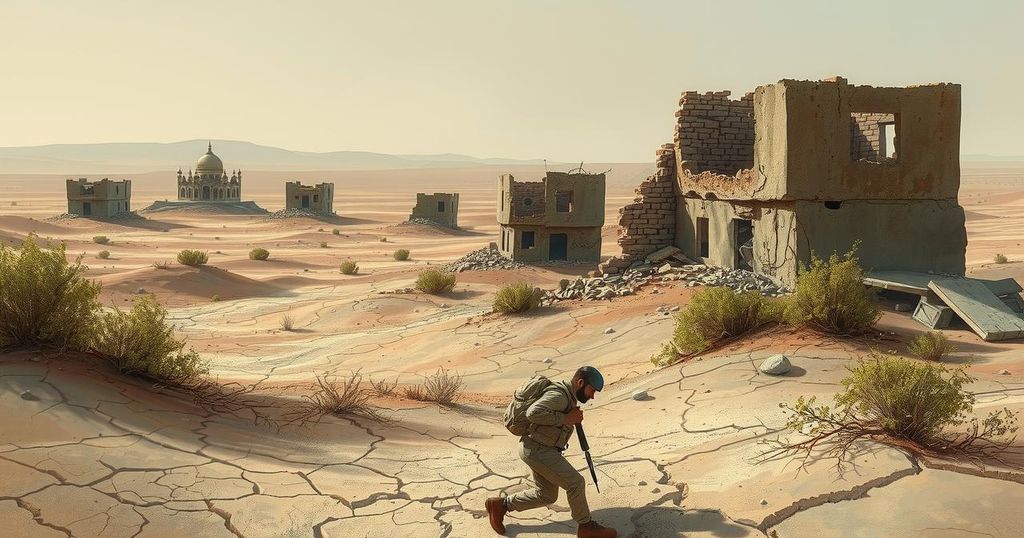Potosí, Bolivia, is notable for being the only place where citizens can legally purchase dynamite, an essential tool in local mining. Historically referred to as “The Mountain That Eats Men,” the Cerro Rico has a rich but troubling legacy tied to Spanish colonial exploitation. Despite economic hardships, the area retains a vibrant culture, exemplified in annual mining festivals and enduring customs surrounding mining practices, including the worship of the effigy El Tío.
In Potosí, Bolivia, tourists can legally purchase dynamite, an extraordinary practice showcased by local tours. During a recent tour, six tourists experienced the thrill of detonating dynamite in a narrow mineshaft. This unique opportunity to buy dynamite, priced at approximately 13 Bolivianos (under $2), reflects the city’s mining culture, where dynamite is essential for efficient mineral extraction.
Perched at over 4,000 meters (13,000 feet) above sea level, Potosí is renowned not only for its mining history but also for its stunning colonial architecture and vibrant streets. The Cerro Rico, or “Rich Mountain,” historically yielded vast amounts of silver but now serves as a reminder of the region’s economic decline. Julio Vera Ayarachi, a local guide, observes that Potosí is regarded as one of Bolivia’s poorest areas today.
The rich history of Cerro Rico began in 1545 when indigenous prospector Diego Gualpa discovered its silver deposits. Kris Lane, a professor at Tulane University, describes the subsequent arrival of Spanish colonizers who exploited these resources, creating dire labor conditions for indigenous workers. Lane notes that the area transformed into an oppressive environment, akin to a nightmare of forced labor and environmental degradation, leading to its harrowing moniker, “The Mountain That Eats Men.”
Potosí emerged as a bustling city by the end of the 16th century, supplying a staggering 60% of the world’s silver at its height. However, the silver supply dwindled, and by Bolivia’s independence in 1825, most of the precious resource had been extracted, leaving Potosí struggling economically. The current mining operations focus on cheaper minerals, such as tin and zinc, which are subject to dangerous conditions, marked by the extensive and unstable tunnels.
Despite advancements, the lives of Potosí’s miners resemble those of their ancestors. Oscar Torrez Villapuma notes that traditions persist, including prayers to El Tío, a horned effigy believed to be a guardian of the mines. The polytheistic beliefs blend indigenous and Christian influences, as miners make offerings of coca leaves and other items to ensure protection and prosperity in their perilous endeavors.
Living conditions for miners remain harsh, with a life expectancy as low as 40 years due to workplace accidents and chronic diseases like silicosis. Lane emphasizes the cultural richness that emerges from this environment, highlighting the creativity and camaraderie among miners despite the hardships they face. Annual mining carnivals attract tourists, showcasing Potosí’s vibrant celebrations while highlighting the stark contrast between the miners’ daily lives and the festival atmosphere.
Many tourists visiting Potosí return home post-celebration, while miners continue their arduous routines, embodying the ongoing struggle intertwined with the city’s mining legacy and stark socioeconomic realities.
In conclusion, Potosí represents a unique convergence of history, culture, and the ongoing challenges faced by miners. The legal sale of dynamite underscores the region’s distinctive customs and mining heritage. Despite the rich history tied to the Cerro Rico and its past as a silver powerhouse, Potosí now grapples with poverty and dangerous mining conditions. Nevertheless, vibrant traditions and community bonds persist, giving the region a resilience that continues to attract both tourists and scholars alike.
Original Source: www.koamnewsnow.com




